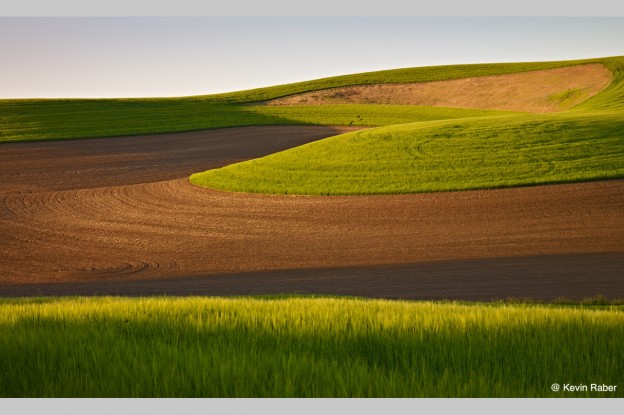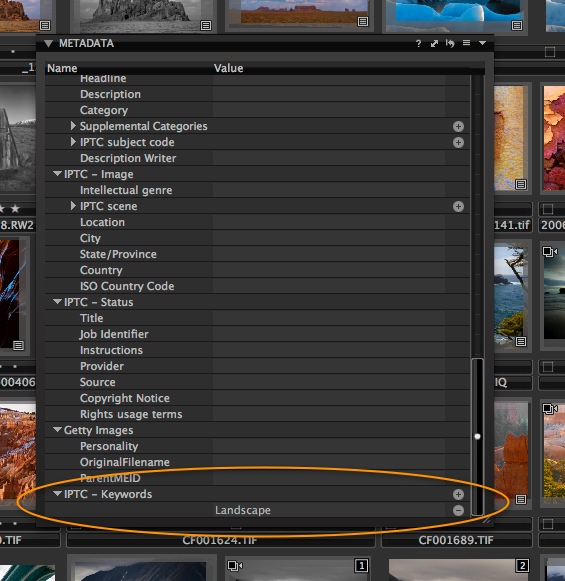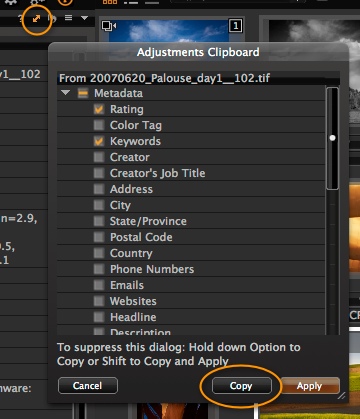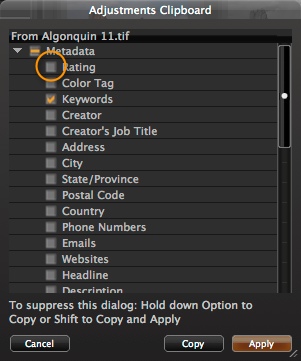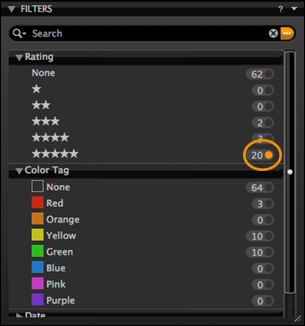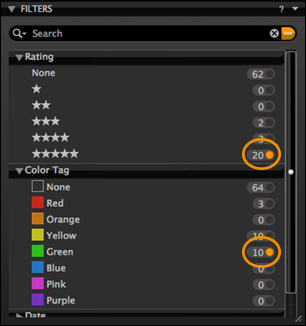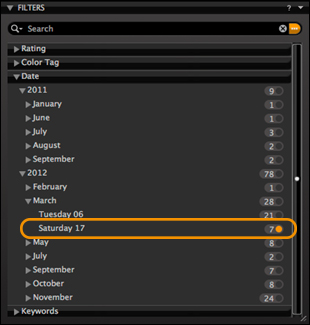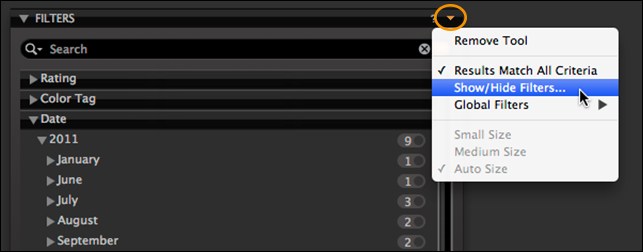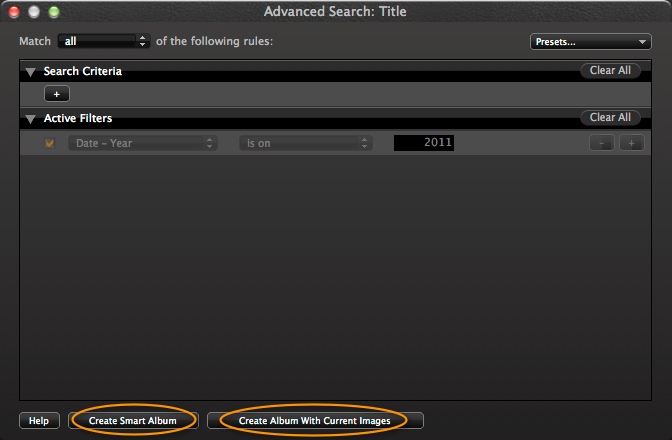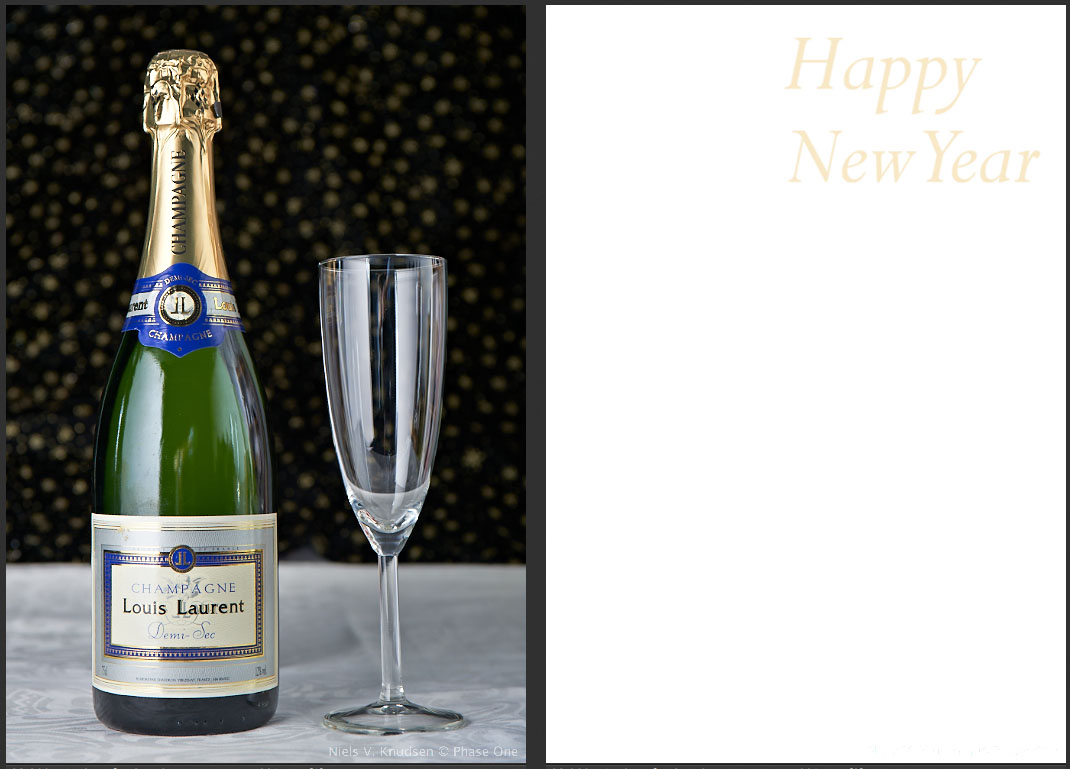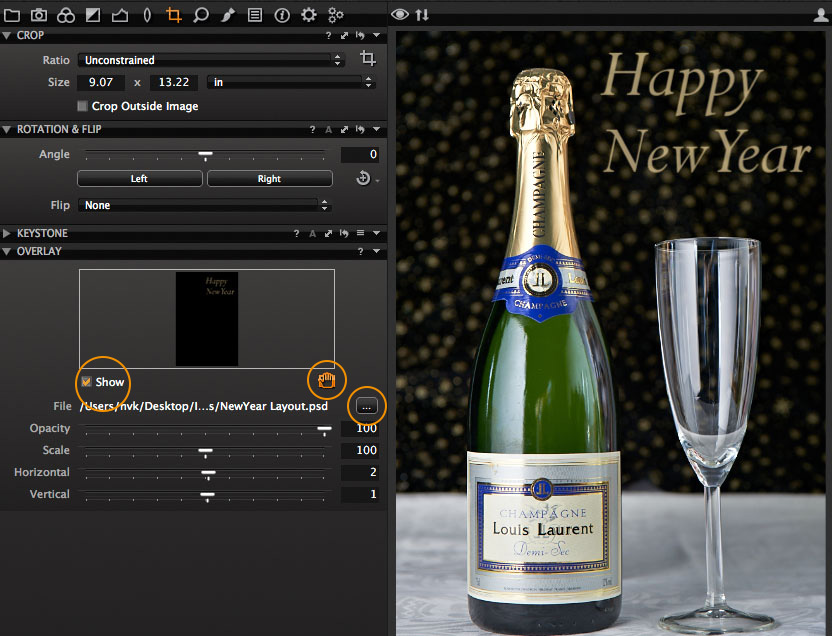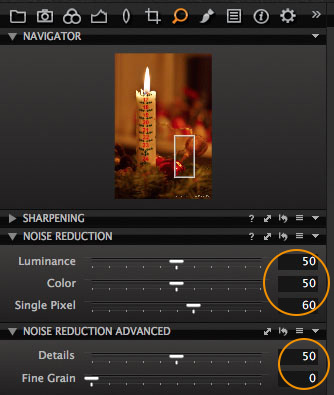Keywords in any collection of images (a collection could be an Album or Smart Album, for example) are displayed in the Filters tool. The only keywords that are displayed are the ones that belong to that particular collection. For example in this Album, we can see that 28 have no keywords at all, five images have the keyword Ice and 23 have the keyword Landscape.
Keywords are added in the Metadata tool which can be found in the metadata tool tab. Keywords that already exist in a collection can easily be added to further images, simply with a drag-and-drop action.
Adding Keywords
To add multiple keywords to an image or collection of images, the easiest place to do this is in the Metadata tool. Any image has the possibility to store a great deal of metadata, which can either be generated automatically, in the case of Camera EXIF data, or can be added by the user at a later date, following the metadata IPTC standard.
Keywords are added in the last section of the tool.
To add a keyword to a currently selected image simply click on the plus icon and enter the keyword into the text box.
To continue adding keywords to the same image on a Mac, hit Enter after each keyword to immediately add a new one. Hit Tab to finish the keyword entry for a particular image. On Windows, you need to click the plus icon for each new keyword you want to add and use Tab to finish the keyword entry for a particular image.
Adding Keywords to Multiple Images
To add the same group of keywords to more than one image, use the Copy Settings button (indicated by the top circle) in the Metadata toolbar.
For this particular image we can see that Rating and the Keywords will be copied when we click on the Copy button.
Next, select the other images that you would like to add the Keywords to, click the Copy Settings button once more. If we don’t want to copy the Rating across to other images, we can simply uncheck it…
Finally, click on Apply.
TIP – To avoid entering the Adjustments Clipboard dialogue, hold down the Option key (OS X) or Alt key (Win) to copy immediately or select the image with the master metadata and the images which you want to apply that too, and then Shift click the Copy Settings button. The changes will be applied immediately!
Adding Keywords with Drag and Drop
To add a single keyword to one or more images really quickly, simply drag and drop those images onto the keyword in the Keyword section of the filters tool…
You can use the No Keywords filter to help you see which images in a collection still need Keywords applied.
All the best,
Niels
